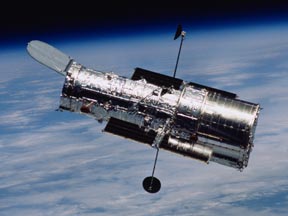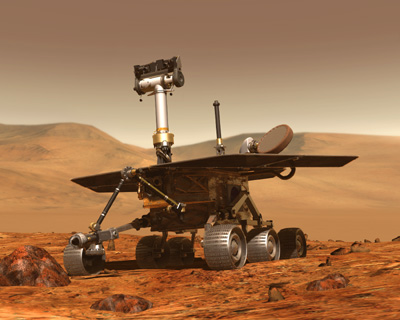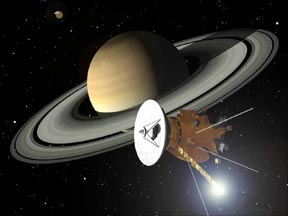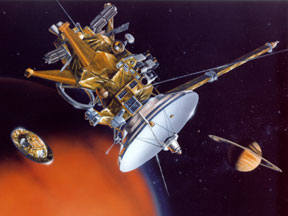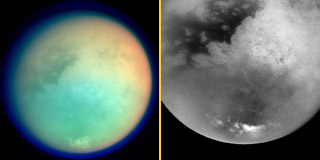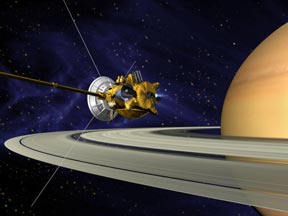Click on image for full size
Image courtesy NASA.
Hubble Servicing Mission Canceled
News story originally written on April 21, 2004
On January 16, 2004, NASA Administrator Sean O'Keefe announced the cancellation of the final scheduled servicing mission to the Hubble Space Telescope (HST). The review board studying the Shuttle Columbia disaster recommended that all future Space Shuttle missions fly in orbits that allow them to reach the International Space Station (ISS) in case of an emergency. The orbit a shuttle would need to follow to service Hubble would not allow the shuttle to get to the ISS.
The final servicing mission to Hubble was scheduled for sometime in 2006. During that mission, shuttle astronauts were to replace a fine guidance sensor which points the telescope, install protective "blankets" on top of torn insulation, and replace numerous other aging components onboard the HST. They were also planning to install two new instruments that would have improved Hubble's capabilities: a wide field camera sensitive to both ultraviolet and infrared wavelengths that is two to three times more sensitive than Hubble's current near infrared camera, and a powerful new high-resolution spectrograph capable of studying the chemical composition of Hubble's targets.
Without the servicing mission, the aging Hubble will probably fail a few years sooner than previously expected. Predicting when the orbiting observatory will fail includes some guesswork, but NASA engineers expect that it will expire three or four years sooner than the previous estimate of 2010. Hubble's batteries, which its solar panels recharge several times each day, are gradually growing weaker. Gyroscopes that stabilize and help to point the telescope are prone to failure, and the eventual loss of these devices will prevent ground controllers from steering Hubble.
NASA's long-term plan for Hubble is to attach a rocket to the spacecraft and steer it to a controlled reentry into Earth's atmosphere. This controlled "crash landing" would plunge Hubble's remains into an ocean far from populated areas or shipping lanes. Without such a controlled crash, Hubble's orbit would eventually decay causing the spacecraft to tumble to Earth at an unpredictable location, possible causing damage or injuries.
NASA is developing a successor to Hubble called the James Webb Space Telescope, which is slated for launch around 2011. This new space telescope will have a mirror six times as large in area as Hubble's. There are some parts of the spectrum that Hubble can observe that the new telescope cannot, so the new telescope is not a perfect replacement for the HST.
Some people think NASA is making a mistake in canceling the final servicing mission to Hubble. They think the risk to Shuttle astronauts is small, and that Hubble is too valuable of a resource to abandon. They are urging NASA to reconsider its decision to cancel the mission to Hubble. Some Senators and members of Congress have started to debate the issue in the U.S. Congress. It seems unlikely, but still possible, that the servicing mission to Hubble could be reinstated in the future.


